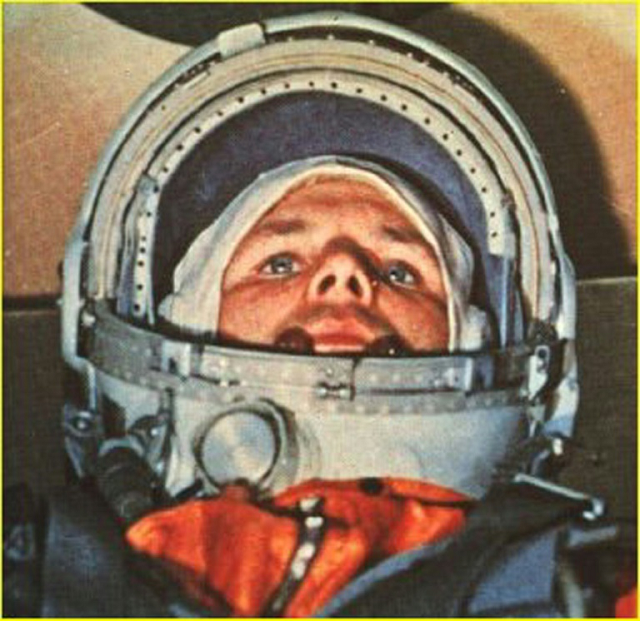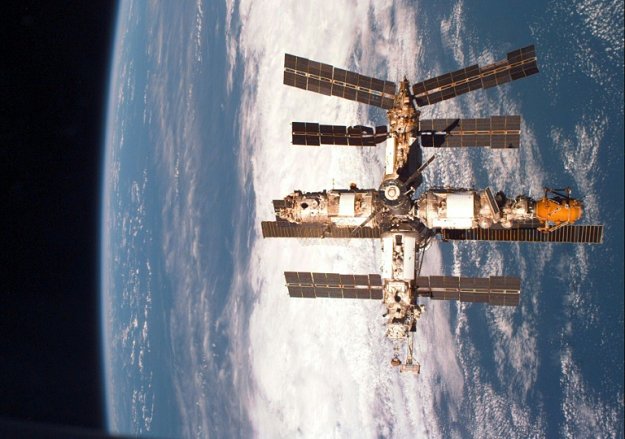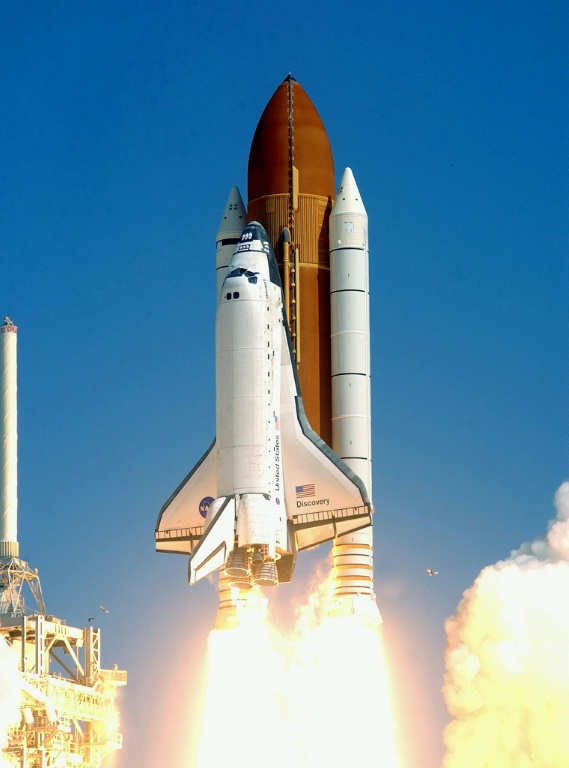
On October 4, 1957, the Soviet Union launches the first artificial space satellite, Sputnik 1, ushering in the Cold War tussle for the cosmos.
The beach ball-sized aluminium sphere takes 98 minutes to orbit the Earth and sends back the first message from space, simple "beep-beep-beep" radio signals.
On November 3, Sputnik 2 carries the first living being to fully orbit the Earth, a small street dog called Laika. She dies after a few hours.
On April 12, 1961, Soviet cosmonaut Yuri Gagarin becomes the first man in space, completing a single, 108-minute orbit.
Twenty-three days later, Alan Shepard is the first American in space when he makes a 15-minute trip on May 5.
The Cold War rivals are only joined in space by a third country in 2003 when China sends up Yang Liwei onboard lunar orbiter Shenzou V.
On July 21, 1969, US astronaut Neil Armstrong is the first man to step onto the Moon, his teammate Edwin Aldrin joining him around 20 minutes later.
Between 1969 and 1972, 12 astronauts - all American - walked on the Moon as part of NASA's Apollo program.
 The Soviet-Russian space station Mir, which orbited the Earth from 1986 to 2001. PHOTO: AFP
The Soviet-Russian space station Mir, which orbited the Earth from 1986 to 2001. PHOTO: AFPOn April 19, 1971, the Soviet Union launches the first orbital space station, Salyut 1.
Construction of the still-operating International Space Station (ISS) starts in 1998. The biggest man-made structure in space, it orbits Earth 16 times a day.
The ISS, in which 16 countries participate, took over from the Russian space station Mir, which was brought back to Earth in 2001 after 15 years in orbit.
On July 20, 1976, US spacecraft Viking 1 becomes the first to successfully land on Mars and send back images of the Red Planet.
The robot Opportunity explored Mars between 2004 and 2018, with NASA's Curiosity Rover still active there.
About 40 missions have been sent to Mars, more than half failing.
 Discovery, one of five US space shuttles, takes off from Cape Canaveral in Florida on July 26, 2005. PHOTO: AFP
Discovery, one of five US space shuttles, takes off from Cape Canaveral in Florida on July 26, 2005. PHOTO: AFPOn April 12, 1981, the US space shuttle Columbia, the first reusable manned spacecraft, makes its first voyage.
It is followed by Challenger, Discovery, Atlantis and Endeavour, which serve the ISS until the shuttle programme winds up in 2011.
The United States has since depended on Russia to transport its astronauts to the ISS.
Two US shuttles were destroyed in flight, with the loss of 14 astronauts: Challenger in 1986 and Columbia in 2003.
On April 25, 1990, the Hubble is the first space telescope to be placed into orbit, at 547 kilometres (340 miles) from Earth.
Thirteen metres (42 feet) long, Hubble revolutionises astronomy, allowing scientists to observe the planets and most distant stars and galaxies.
On April 28, 2001, Italian American multi-millionaire Dennis Tito, 60, becomes the world's first space tourist. He pays Russia $20 million to stay on the ISS for eight days.
In all, seven space tourists have taken Russian flights to the ISS.
On September 29, 2008, US company SpaceX is the first private venture to successfully launch a rocket into space, its Falcon 1.
SpaceX's Dragon cargo ship on May 22, 2012 becomes the first commercial spacecraft to visit the ISS.
On November 12, 2014, the European Space Agency places a small robot, Philae, on a comet more than 500 million kilometres from Earth. The first comet lander is part of a mission aiming to explore the origins of the Solar System.
The man-made object that is the furthest away from the Earth is the unmanned US spaceship Voyager 1, launched in September 1977 and still travelling. In August 2012 it made it into interstellar space, about 13 billion miles from Earth.



1732184775-0/BeFunky-collage-(80)1732184775-0-165x106.webp)

1732177276-0/Copy-of-Untitled-(62)1732177276-0-270x192.webp)
1732177123-0/BeFunk_§_]__-(21)1732177123-0.jpg)
1732179136-0/Copy-of-Untitled-(63)1732179136-0-270x192.webp)

1732172224-0/Express-Tribune-(1)1732172224-0-270x192.webp)
1732172770-0/Copy-of-Untitled-(60)1732172770-0-270x192.webp)






COMMENTS
Comments are moderated and generally will be posted if they are on-topic and not abusive.
For more information, please see our Comments FAQ